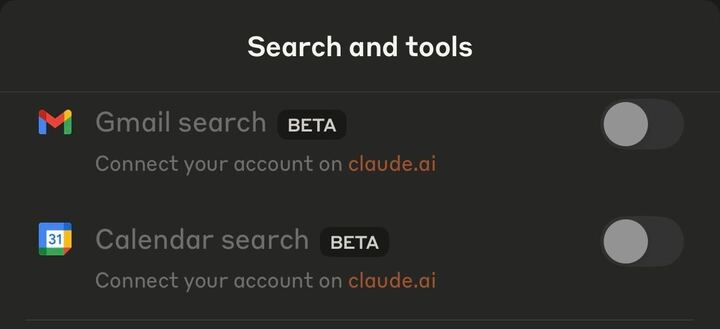AI Summary
Anthropic has introduced voice mode for its AI assistant, Claude, built on the Claude Sonnet 4 model, enabling users to have natural conversations, interact with documents and images, and integrate with Google Workspace for paid subscribers. This move intensifies the AI voice assistant battleground, where competitors like OpenAI's ChatGPT and Google's Gemini Live are also vying for supremacy, focusing on natural interaction and enhanced productivity, despite early challenges in voice quality and human-like speech.
Anthropic just rolled out
voice mode for Claude yesterday, letting users have actual conversations with their AI assistant for the first time. While OpenAI has been
pushing voice interactions with ChatGPT for months, Claude's entry into the voice arena represents more than just catching up with competitors.
Voice interactions have become the new battleground for AI supremacy. OpenAI grabbed headlines with ChatGPT's Advanced Voice Mode, which can handle interruptions and maintain natural conversation flow. Google countered with Gemini Live, while Elon Musk's xAI launched Voice Mode for Grok. Each company promised the same thing: making AI feel less like typing commands and more like talking to a knowledgeable friend.
Voice interactions remove the friction of typing, especially on mobile devices. They make AI accessible while driving, exercising, or when your hands are occupied. More importantly, they make the technology feel more natural and intuitive.
But early implementations faced challenges. Users complained about voice quality, interruption handling, and the uncanny valley effect of almost-but-not-quite-human speech patterns. Some of OpenAI's users even petitioned to bring back the original voice mode, claiming the "advanced" version felt like a downgrade.
Claude's Thoughtful Entry
Anthropic's voice mode appears designed to sidestep these early pitfalls. Built on the company's latest Claude Sonnet 4 model, the feature launches in beta with five distinct voice options. Users can switch seamlessly between text and voice during conversations, and the system displays key points on screen as Claude speaks.
The integration feels more comprehensive than just adding speech capabilities. Claude can discuss documents and images through voice, pulling in visual context that makes conversations richer and more practical. Imagine asking Claude to explain a complex chart while commuting, or having it walk you through a document while your hands are busy with other tasks.
The rollout strategy also shows Anthropic's measured approach. Rather than a flashy announcement, the company is quietly enabling voice mode for users over the coming weeks. Early reports suggest the experience feels polished, despite its beta status.
The Business Logic Behind Voice
Voice capabilities aren't just about user experience. They represent a fundamental shift in how we interact with information and complete tasks. When voice interactions feel natural, AI assistants can become true productivity partners rather than sophisticated search engines.
This explains why Anthropic has integrated voice mode with Google Workspace for paid subscribers. Users can ask Claude to summarize calendar appointments or search through Gmail conversations using natural speech. For enterprise customers, this integration could transform how teams interact with their productivity tools.
The timing aligns with broader market trends. As AI assistants handle increasingly complex tasks, voice becomes the interface that scales with complexity. It's easier to explain nuanced requirements through speech than through carefully crafted text prompts.
Technical Challenges and Solutions
Creating convincing AI voice interactions involves solving multiple technical challenges simultaneously. The system needs to understand natural speech patterns, process context from ongoing conversations, generate appropriate responses, and convert those responses back to natural-sounding speech in real time.
Claude Sonnet 4's architecture appears well-suited for these demands. The model's enhanced reasoning capabilities help maintain conversation context, while its integration with productivity tools provides practical value beyond casual chat. The ability to discuss visual content adds another layer of complexity that requires sophisticated multimodal understanding.
Anthropic's partnership discussions with Amazon and voice specialist ElevenLabs, revealed earlier this year, likely contributed to the technical foundation. These collaborations suggest voice capabilities have been in development for months, allowing for thorough testing and refinement.
Usage Patterns and Limitations
Voice mode comes with practical constraints that reveal Anthropic's business strategy. Free users get 20-30 voice conversations, counting toward regular usage limits. This approach encourages adoption while pushing heavy users toward paid subscriptions.
The feature restrictions create clear upgrade paths. Basic voice functionality works for everyone, but Google Workspace integration requires paid subscriptions. Enterprise features like Google Docs integration remain exclusive to higher-tier plans. This tiered approach maximizes accessibility while protecting premium revenue streams.
These limitations also manage computational costs. Voice interactions require more processing power than text, involving speech recognition, language processing, response generation, and speech synthesis. By capping free usage, Anthropic maintains sustainable economics while growing its user base.
Competitive Future Implications
Claude's voice mode entry intensifies competition across the AI assistant landscape. Each platform now offers voice capabilities, but with different strengths and limitations. OpenAI emphasizes interruption handling and conversation flow. Google leverages search integration and device ecosystem. Anthropic focuses on document analysis and workspace productivity.
This differentiation suggests the market is maturing beyond basic voice interaction. Companies are identifying specific use cases where their assistants excel, rather than trying to be everything to everyone. Claude's strength in document analysis and reasoning creates natural advantages for business and educational applications.
Future developments will likely focus on improving conversation naturalness and expanding integration capabilities. As AI assistants handle more complex tasks, voice interactions need to support longer, more nuanced exchanges. The ability to maintain context across extended conversations becomes crucial.
The integration with productivity tools also suggests broader ambitions. Voice-controlled AI that can schedule meetings, draft emails, and analyze documents transforms how we work. Claude's document analysis strengths position it well for these workplace applications.
The competition between AI voice assistants ultimately benefits everyone. As companies race to improve their offerings, users get better experiences, more features, and greater choice. Claude's entry ensures this competition continues driving innovation forward.
Recent Posts













